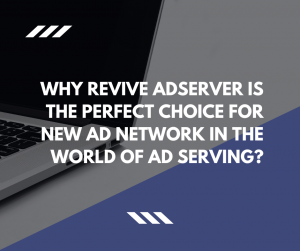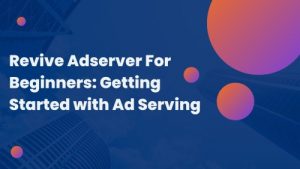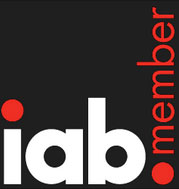Scaling Revive Adserver for high-traffic environments is essential to ensure smooth and efficient ad delivery. This guide explores techniques and solutions to handle large volumes of ad requests and maintain consistent performance, enabling you to maximize revenue and deliver a seamless user experience.
In today’s digital landscape, handling high volumes of ad requests is critical for the success of ad-serving platforms like Revive Adserver. This introduction provides an overview of the importance of scaling and highlights the upcoming sections where we will discuss various techniques and strategies to scale Revive Adserver effectively in high-traffic environments.
As the demand for online advertising grows, it is crucial to ensure that Revive Adserver can handle the increasing volume of ad requests without sacrificing performance. This introduction sets the stage for exploring solutions to scale Revive Adserver, including hardware considerations, distributed system architecture, database optimization, and more. Get ready to dive into the world of scaling ad-serving platforms!
Load Analysis and Capacity Planning
Load analysis and capacity planning are vital steps in scaling Revive Adserver for high-traffic environments. Understanding traffic patterns and peaks allows you to anticipate the demands on your ad server and allocate resources accordingly. By analyzing current performance metrics, such as response times and server utilization, you can identify bottlenecks and areas for improvement. This analysis helps determine the scalability requirements, including the number of concurrent users, ad requests per second, and data storage capacity needed. With a comprehensive load analysis and capacity planning process, you can ensure that your Revive Adserver installation can handle the anticipated traffic and deliver optimal performance, enhancing the overall ad-serving experience.
Hardware and Infrastructure Considerations
When scaling Revive Adserver for high-traffic environments, selecting the right hardware configuration is crucial. Robust and scalable hardware ensures that your ad server can handle the increased load effectively. Factors to consider include CPU capacity, memory, disk space, and network bandwidth. Additionally, implementing load balancing and high availability solutions is essential to distribute the workload and ensure uninterrupted ad delivery. Load balancers distribute incoming traffic across multiple servers, optimizing resource utilization and improving overall performance. High availability setups, such as redundant server architectures and failover mechanisms, minimize downtime and enhance the reliability of your ad server infrastructure. By carefully considering hardware requirements and implementing suitable infrastructure solutions, you can create a solid foundation for scaling Revive Adserver and accommodating high volumes of ad requests.
Distributed System Architecture
Implementing a distributed system architecture is a key component in scaling Revive Adserver for high-traffic environments. By distributing the workload across multiple servers or nodes, you can achieve improved performance and scalability. Techniques such as sharding and partitioning enable you to divide data and processes, allowing for parallel processing and reducing bottlenecks. Horizontal scaling involves adding more servers to handle increased traffic, while vertical scaling focuses on upgrading hardware to enhance individual server performance. Distributed caching is another crucial aspect, leveraging in-memory caching solutions to store frequently accessed data, reducing database load and improving response times. By designing a well-architected distributed system, you can effectively handle large volumes of ad requests and ensure consistent performance for your Revive Adserver installation.
Optimizing Database Performance
Optimizing the performance of the database is a critical aspect of scaling Revive Adserver for high-traffic environments. Efficient database operations are essential for handling the increasing volume of ad requests and maintaining fast response times. Database indexing plays a crucial role in enhancing query performance by organizing data for quick retrieval. Query optimization techniques, such as optimizing SQL queries and avoiding unnecessary joins, can significantly improve database performance. Implementing database replication and clustering ensures high availability and fault tolerance, allowing for seamless failover in case of server failures. Database sharding, on the other hand, involves partitioning data across multiple database servers, distributing the workload and enabling parallel processing. By implementing these optimization strategies, you can boost the database performance of Revive Adserver, ensuring smooth and efficient ad serving in high-traffic environments.
Content Delivery Network (CDN) Integration
Integrating a Content Delivery Network (CDN) is crucial for scaling Revive Adserver in high-traffic environments. A CDN improves the delivery of ad content by caching it in multiple server locations across the globe. This distributed network infrastructure brings the ad content closer to the end-users, reducing latency and improving overall performance. By leveraging a CDN, you can ensure faster ad loading times, especially for geographically dispersed audiences. Caching strategies for both static and dynamic ad content help minimize the load on your ad server and reduce the strain on your infrastructure. By effectively integrating a CDN into your Revive Adserver setup, you can optimize content delivery, enhance user experience, and handle increased traffic volumes with ease.
Performance Monitoring and Load Testing
Performance monitoring and load testing are essential practices for scaling Revive Adserver in high-traffic environments. By monitoring key performance indicators (KPIs) such as response times, server CPU and memory utilization, and database performance, you can identify potential bottlenecks and areas of improvement. Proactively monitoring these metrics allows you to make informed decisions about resource allocation and infrastructure optimization. Load testing, on the other hand, involves simulating high volumes of ad requests to evaluate the system’s performance under stress. By conducting thorough load tests, you can identify the system’s capacity, detect performance limitations, and fine-tune configurations to ensure optimal performance and stability. Performance monitoring and load testing go hand in hand to provide insights into your Revive Adserver’s performance, allowing you to optimize resource allocation and address potential performance issues before they impact user experience.
Auto-scaling and Elasticity
Auto-scaling and elasticity are crucial for efficiently handling fluctuating traffic loads when scaling Revive Adserver. Auto-scaling enables your ad server infrastructure to automatically adjust resources based on demand. By monitoring key metrics like CPU utilization, request rates, or latency, auto-scaling mechanisms can dynamically add or remove server instances to match traffic patterns. This ensures that your ad server scales up during peak periods to handle increased ad requests and scales down during periods of lower activity, optimizing resource utilization and cost efficiency. Elasticity refers to the ability of your infrastructure to seamlessly adapt to changing workloads without manual intervention. By implementing auto-scaling and elasticity, you can maintain consistent performance, handle sudden spikes in traffic, and ensure that your Revive Adserver remains responsive and available to deliver ads to your audience effectively.
Content Optimization and Delivery
Content optimization and delivery are key considerations when scaling Revive Adserver for high-traffic environments. To maximize performance and user experience, it is crucial to minimize ad payload and reduce latency. This can be achieved through various techniques such as compressing ad assets, optimizing image sizes, and minimizing the number of external resource requests. Additionally, implementing effective content delivery optimization strategies, such as leveraging HTTP/2 and implementing content delivery networks (CDNs), can significantly enhance the delivery speed of ad content. Caching strategies for both static and dynamic ad content help reduce the load on the ad server and ensure faster delivery to end-users. By focusing on content optimization and efficient delivery, you can deliver ads quickly, improve user engagement, and effectively handle high volumes of ad requests in a scalable manner with Revive Adserver
Disaster Recovery and Business Continuity
Disaster recovery and business continuity planning are essential aspects of scaling Revive Adserver for high-traffic environments. It is crucial to have robust backup and restore strategies in place to safeguard your ad server data and ensure its availability in case of system failures or unforeseen events. Implementing redundancy mechanisms, such as deploying secondary servers or using cloud-based backup solutions, can help minimize downtime and maintain uninterrupted ad serving. Failover mechanisms and automatic failover solutions ensure seamless transitions to backup systems during failures, reducing the impact on ad delivery. Regular testing and validation of disaster recovery plans help identify any gaps or vulnerabilities, allowing for proactive measures to be taken. By prioritizing disaster recovery and business continuity, you can protect your ad server infrastructure, maintain the trust of your advertisers, and ensure uninterrupted operations even in the face of unexpected events.
Best Practices and Tips for Scalability
Implementing best practices and following key tips can significantly enhance the scalability of Revive Adserver in high-traffic environments. During development, it is crucial to design the system with scalability in mind, considering factors such as modular architecture, decoupled components, and scalable database schemas. Performance optimization techniques, such as code profiling, query optimization, and caching strategies, should be employed to ensure efficient resource utilization. Continuous monitoring of key performance indicators and capacity planning help proactively identify and address performance bottlenecks. It is important to prioritize horizontal scaling by adding more servers rather than relying solely on vertical scaling, which involves upgrading individual servers. Lastly, embracing automation and orchestration tools streamlines processes and ensures consistency when scaling and managing Revive Adserver installations. By following these best practices and tips, you can effectively scale Revive Adserver, handle high volumes of ad requests, and deliver optimal performance for your advertising ecosystem.
Scaling Revive Adserver for high-traffic environments requires careful planning, implementation of appropriate techniques, and continuous monitoring. By understanding traffic patterns, optimizing hardware and infrastructure, designing a distributed system architecture, and optimizing database performance, you can ensure smooth ad serving even under heavy loads. Integrating a Content Delivery Network (CDN), conducting performance monitoring, and load testing are crucial for maintaining consistent performance. Auto-scaling and elasticity allow your infrastructure to dynamically adjust to traffic demands, while content optimization and delivery strategies enhance user experience. Disaster recovery and business continuity plans ensure uninterrupted operation during system failures. By adhering to best practices and following scalability tips, you can effectively handle high volumes of ad requests, maximize revenue, and deliver a seamless ad-serving experience with Revive Adserver.
Ready to scale your Revive Adserver installation for high-traffic environments? Visit ReviveAdserverMod.com for expert consulting and guidance to optimize performance, enhance scalability, and maximize your ad-serving potential. Consult our experienced team today and take your ad server to new heights!










